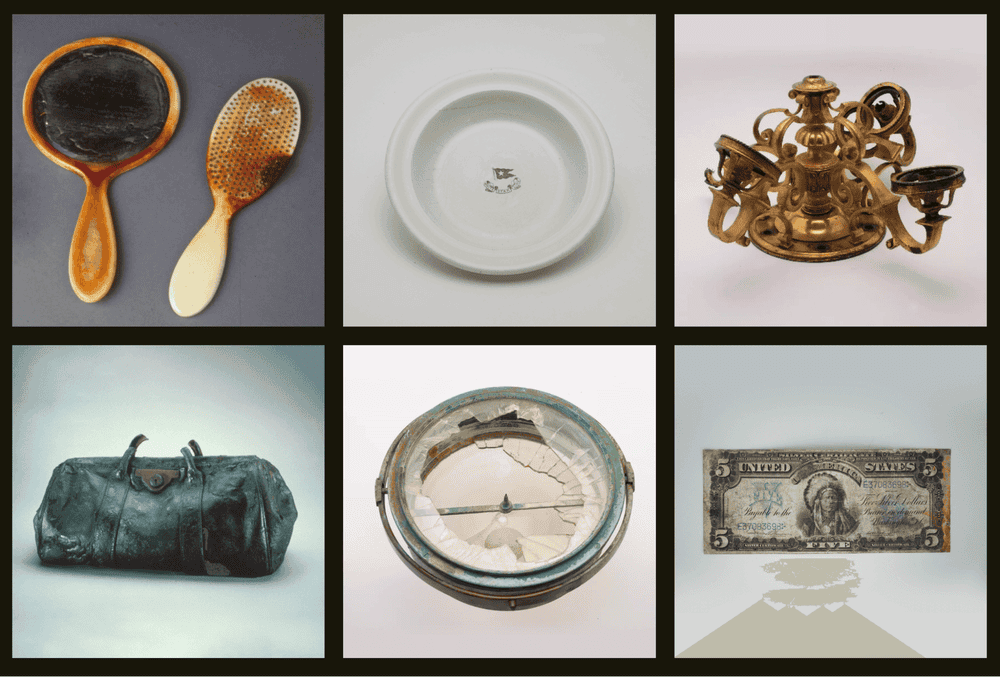How Artifact Labs is Preserving and Connecting History and Culture with Blockchain Technology

Artifact Labs is driven by a mission to “preserve and connect culture and history on the blockchain.” The company puts the power of preservation in the hands of organizations and individuals dedicated to the same goals: to preserve valuable assets, foster accessibility and engagement, facilitate rights management of digital assets, and unlock fundraising and commercialization opportunities.
Historically, Artifact Labs has worked with museums and newspapers to preserve their collections using Web3 tools. Now they’re taking on a much larger project: the shipwreck Titanic.
Artifact Labs has partnered with E/M Group and its affiliate RMS Titanic Inc. to preserve pieces of history from the ill-fated ocean liner. The Titanic project includes tokenizing over 5,500 artifacts, with shared ownership and shared governance, to create a community-driven experience for Titanic enthusiasts worldwide.
Artifact Labs is working with Filecoin Foundation to upload, store, and share thousands of important artifacts and cultural objects from the Titanic and other projects using the Filecoin network and the InterPlanetary File System (IPFS).

Recently, we had an opportunity to talk with Henry Chan, Artifact Labs co-founder and head of product and innovation. Read on for his thoughts on using blockchain to preserve history, how NFTs play a part in engaging the global Titanic enthusiast community, and what’s next for the organization.
Why, for Artifact Labs, does blockchain technology – and in particular the Filecoin network – present a unique opportunity to preserve history and culture?
From a technology perspective, the Filecoin ecosystem is a significant support system for Artifact Labs. We use IPFS and NFT.Storage with the Filecoin network to secure precious digital assets. We want to stay true to our mission of using the decentralized web to preserve history, and using IPFS and the Filecoin network is the best way to live our mission the right way. Having a community around us that embraces the benefits of decentralization — a trustless environment with full user control, greater security, more accuracy and transparency, and reduced downtime — is critical to our mission.
We created the Cultural and Historical Asset Token (CHAT), an Ethereum token standard fully compatible with ERC721 and ERC1155. With CHAT, users can take advantage of several key benefits:
- Comprehensive provenance and context on each artifact to establish significance and certify the value of NFTs of historical assets.
- The ability to connect historical artifacts on the blockchain through NFTs, regardless of the medium, issuer, or asset type.
- An open source architecture, released under the Creative Common Zero (CC0) License.
Filecoin Foundation has been critical in supporting how we’re building our tech stack, how we turn culturally and historically significant assets into digital assets, and how we can store thousands of pieces of history for immutable preservation. The backing of the Foundation has helped us to build the infrastructure that we’re now applying to the Titanic project.
When it comes to creating NFTs for physical artifacts, you mentioned that there are a few different ways that those can be used to engage with the community. How do you see these NFTs being used in the future?
In addition to the preservation of assets, Artifact Labs focuses on fostering engagement, providing accessibility, and building community for the guardians of these valuable assets. For instance, we are working on a collection with RMS Titanic Inc that will continue to build out Titanic’s Web3 journey, engaging and re-engaging the millions of people interested in Titanic and allowing them to assume roles in the community. Those who participate will unlock exclusive benefits, including community events; direct access to experts and content; and even involvement in decision making on future dive expeditions.
We have three overarching goals for the Titanic project: 1) build the community of enthusiasts, 2) establish a community of stakeholders and unlock theƒ utilities with expedition as a highlight, and 3) preserve the thousands of artifacts already recovered from the wreck site. tit
As we continue to embark on expeditions, newly collected items will help further preserve Titanic’s legacy. With blockchain technology and NFTs, we can continue engaging Titanic enthusiasts with the opportunity to own and collect valuable digital assets with legendary stories behind them.
What are your upcoming projects? Are there other ways in which you envision integrating blockchain technology with the expeditions Artifact is conducting or with your other historical initiatives?
Artifact Labs has already made incredible progress in preserving valuable assets from globally renowned museums and cultural institutions on the blockchain. We will continue to develop scalable technology products for them and focus on solving use cases in preservation, rights management, and engagement for cultural and historical assets. We are also excited to partner with some of the most active and vibrant Web3 communities across the globe on our upcoming projects and engagements. We look forward to continuing to be the go-to Web3 player for cultural and historical institutions for their needs.